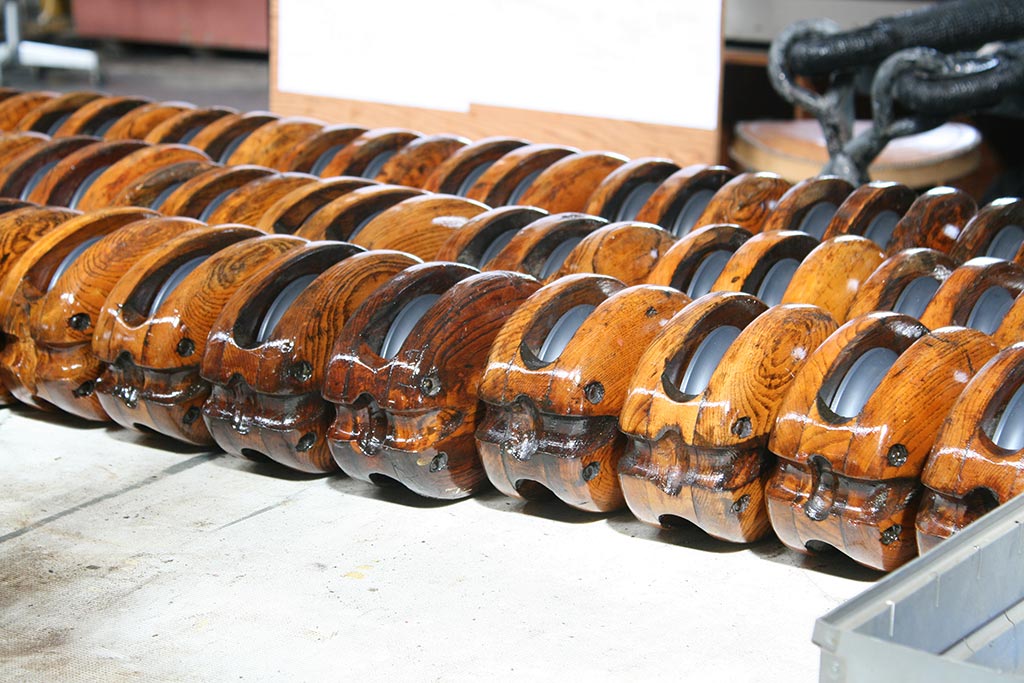What a busy time the past six months have been for USS Constitution!
As readers of “Restoring an Icon” know, the ship’s 26 months in dry dock came to an end in a dramatically lit, late-night refloating on July 23, 2017. Constitution‘s summer at Pier One in the Charlestown Navy Yard included the reinstallation of the replica 32-pound carronades, 24-pound long guns, the topgallant/royal masts, and the reopening of “Old Ironsides” to an eager public on Labor Day weekend. Now that the cooler autumn weather is upon us, it’s time to catch-up with the continuing work on the ship.
Quarter Galleries
The exterior work on Constitution‘s port and starboard quarter galleries is finished, and the interiors are now being completed. Reinstallation of paneling on the back walls, the head seats, decking, and new mahogany sills are the finishing touches being brought to the galleries.
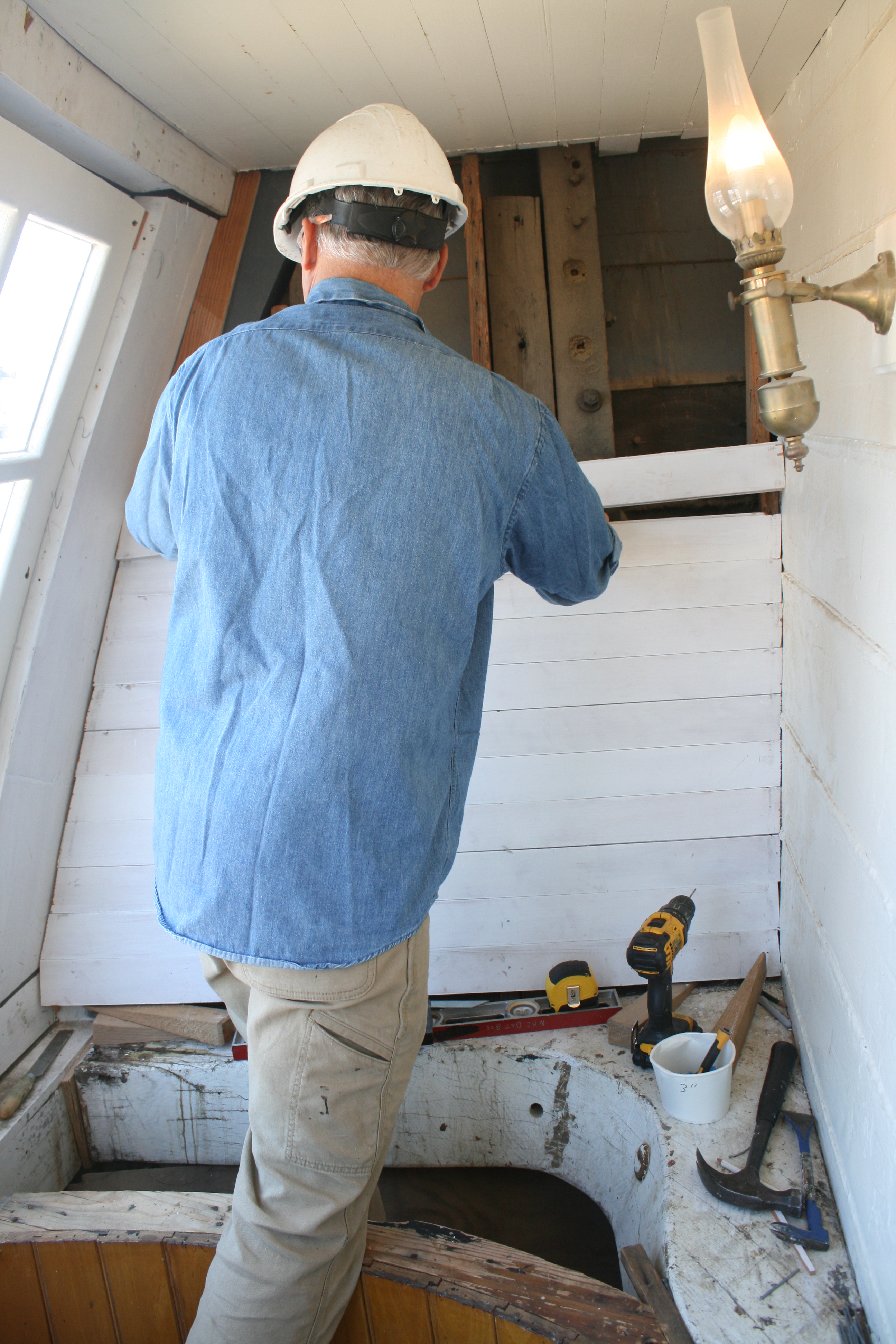
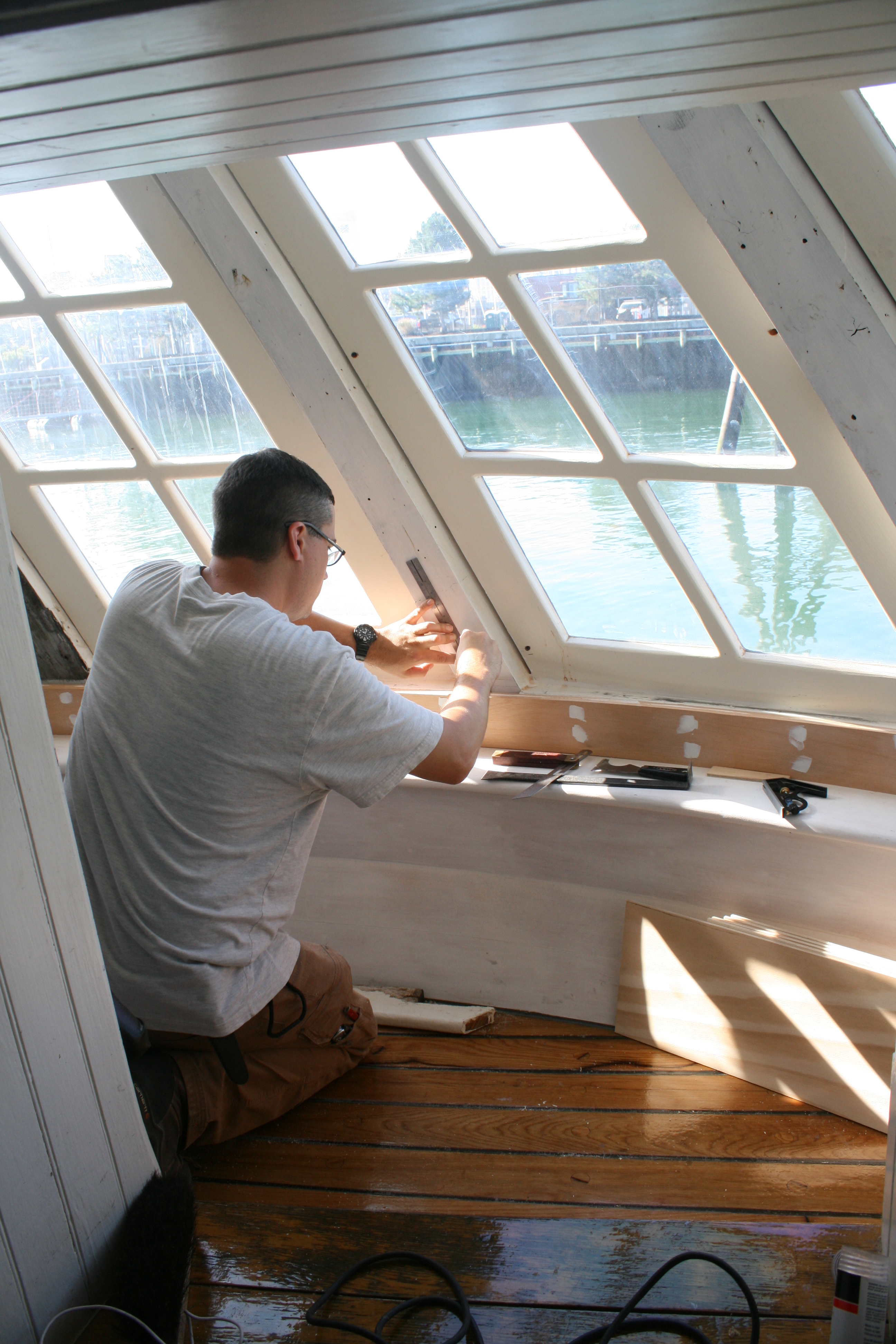
Rigging
The shrouds (the vertical standing rigging) for the topmasts have been rigged and now the long, repetitious process of “rattling down” is underway.
“To RATTLE down the shrouds, is to fix the ratlines to them, in order to prevent [the ratlines] from slipping down by the weight of the sailors…”
“RATLINES, or Ratlings, are small lines, which traverse the shrouds of a ship horizontally, at regular distances from the deck upwards, and forming a variety of ladders, whereby to climb or to descend from any of the mast-heads.” [Falconer’s New Universal Dictionary of the Marine, ed. William Burney, 1815]
To facilitate the riggers’ work while rattling down, “staves” (as Falconer called them in 1815) or “rat boards” (in modern rigging parlance), which today are simply wooden 2x4s, are seized to the shrouds ever few feet. The boards support the riggers while they attach the new ratlines. Since the 1992 – 1996 restoration, Constitution‘s shrouds have been made from spun polyester which holds up extremely well in our harsh Boston climate. Twenty-three ratlines each are fitted to the port and starboard mizzen topmast shrouds alone, giving one a sense of the seemingly endless task of the “rattling down” necessary for Constitution‘s standing rigging.
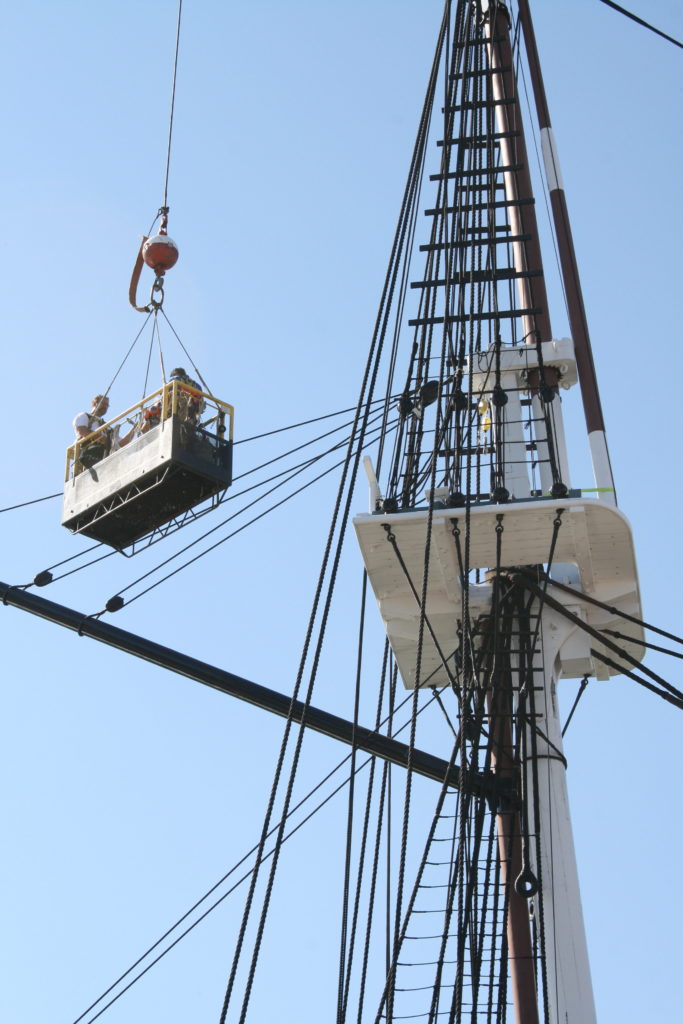
Dozens of rigging blocks have been rebuilt, refurbished and revarnished, and await their installation either in Constitution‘s rig or the tackle of the replica 24-pound long guns.
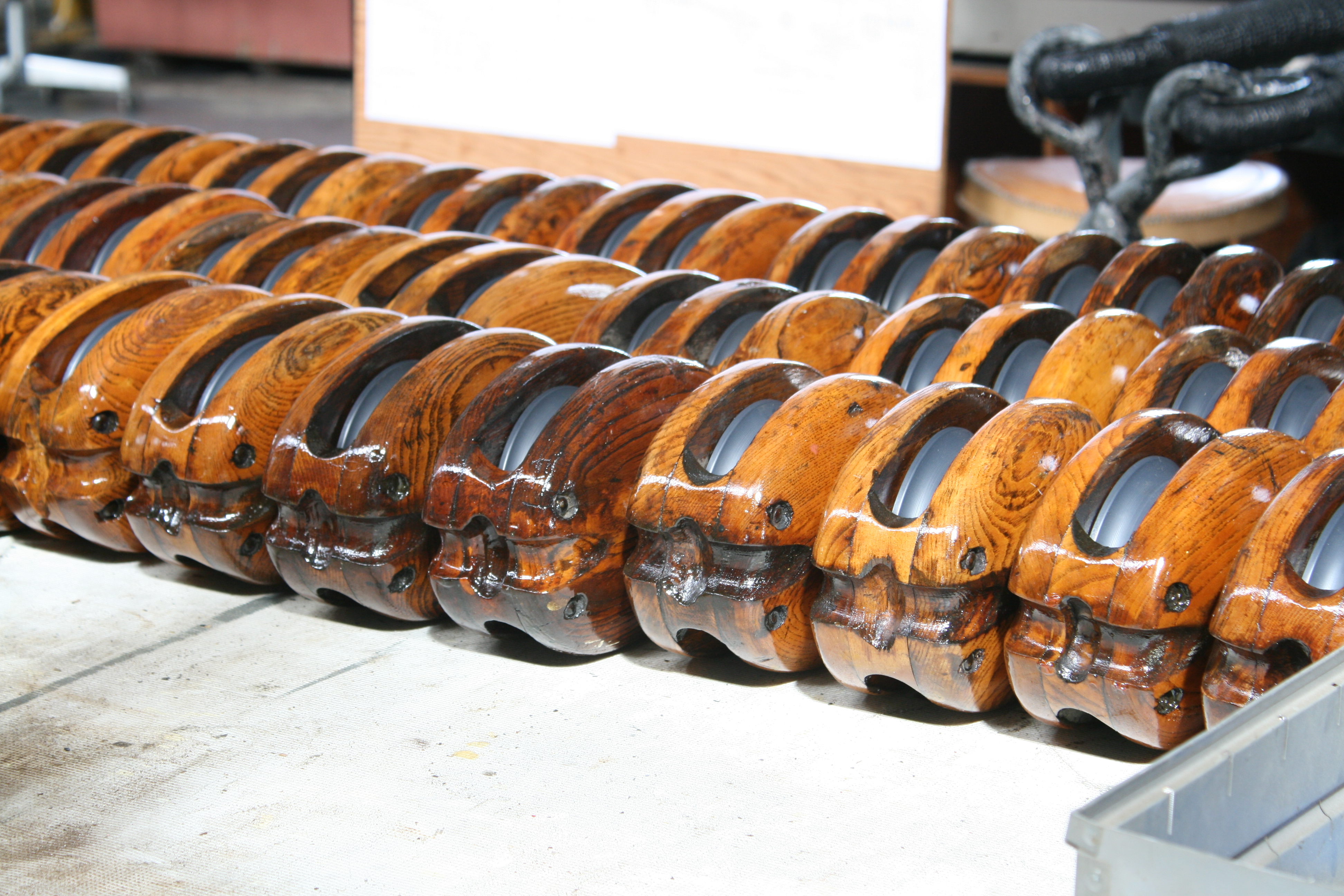
Carronade Carriages
Constitution‘s replica 32-pound carronades, located on the spar (upper) deck, are exposed year-round to Boston’s weather. The laminated white-oak carriages need frequent repairs and for the 2015 restoration, several carronade carriages and their slides were so rotten that they needed to be completely replaced.

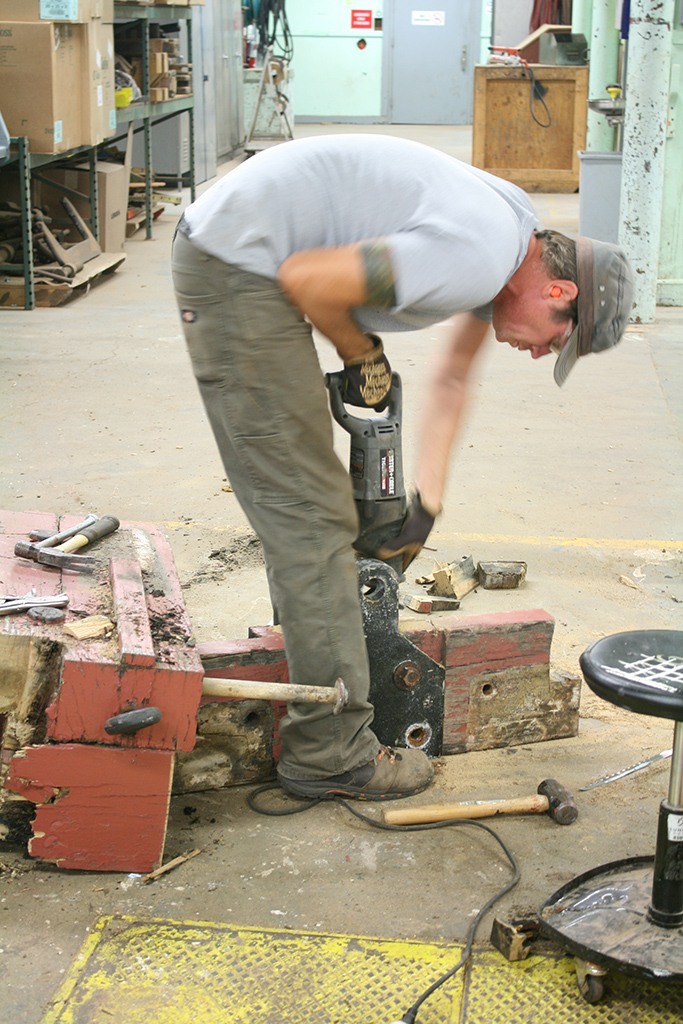
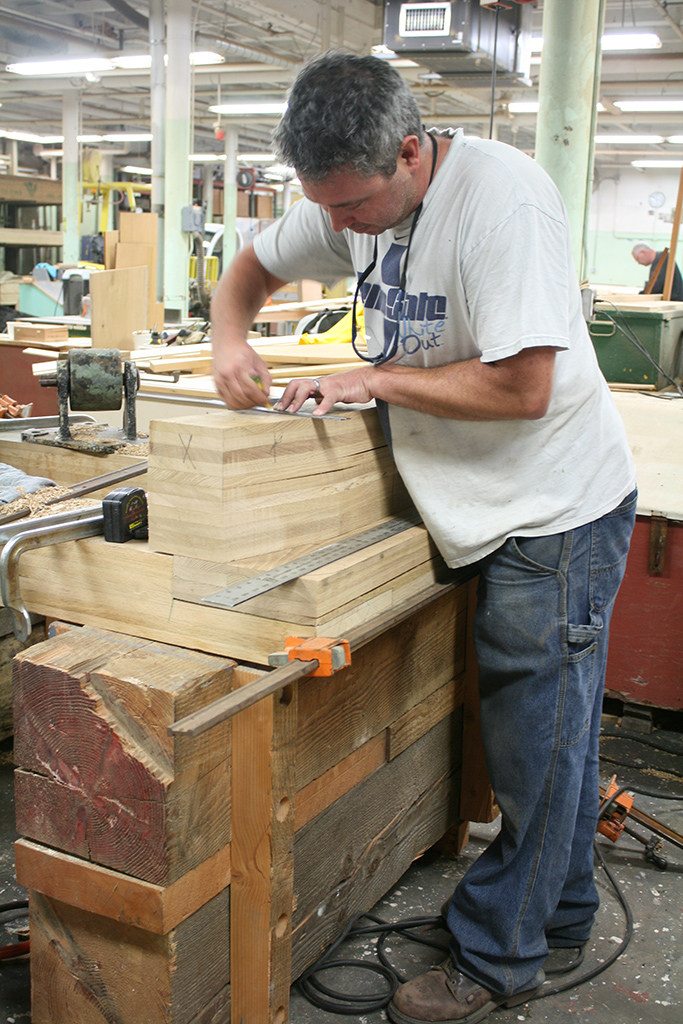
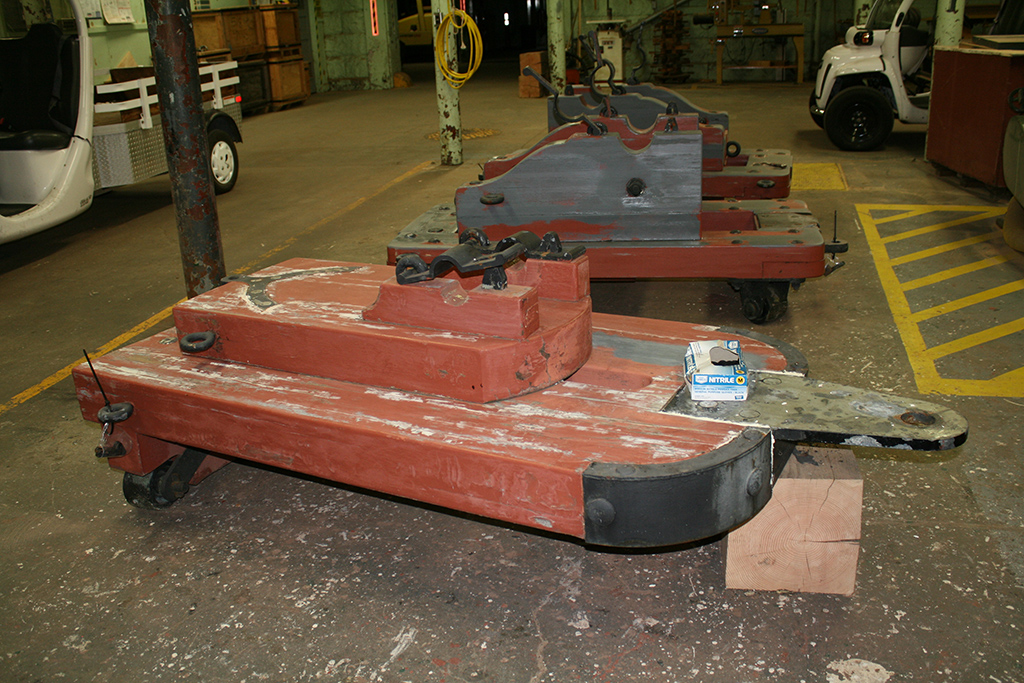
New Boat Davits
The starboard quarter boat davits had to be completely replaced in the 2015-2017 restoration. Laminated white-oak stock was bent at Sentinel Structures, Peshtigo, WI, during the fabrication of the stock pieces. Bruce Comeau, Naval History & Heritage Command Detachment Boston ship restorer, finished and fitted the stock with the appropriate davit hardware. The port quarter boat davits did not need to be replaced, only refurbished, painted, and reinstalled for use. Early 20th-century whaleboats, originally built for Constitution‘s 1927 restoration, hang from the davits during the summer months.
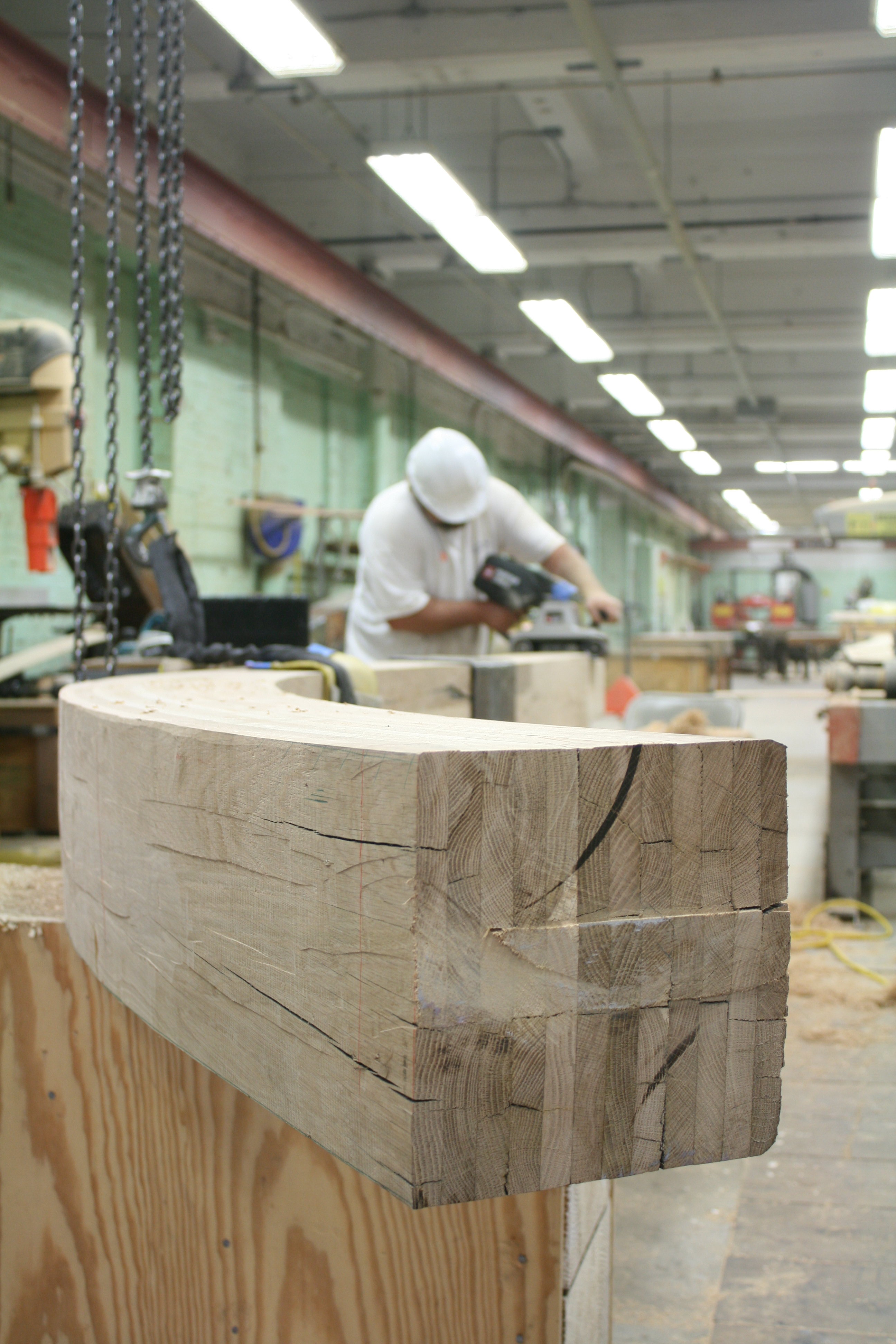
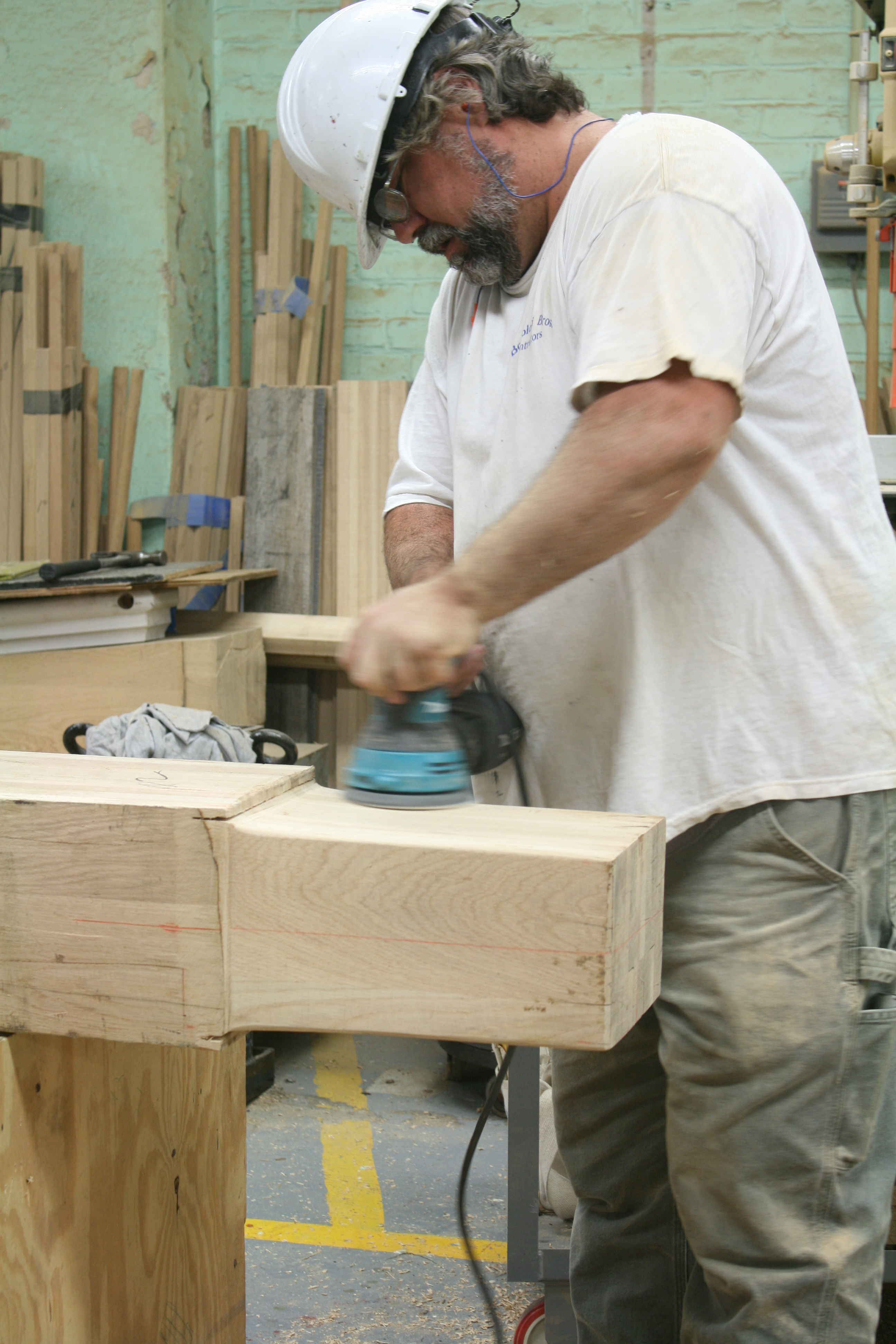
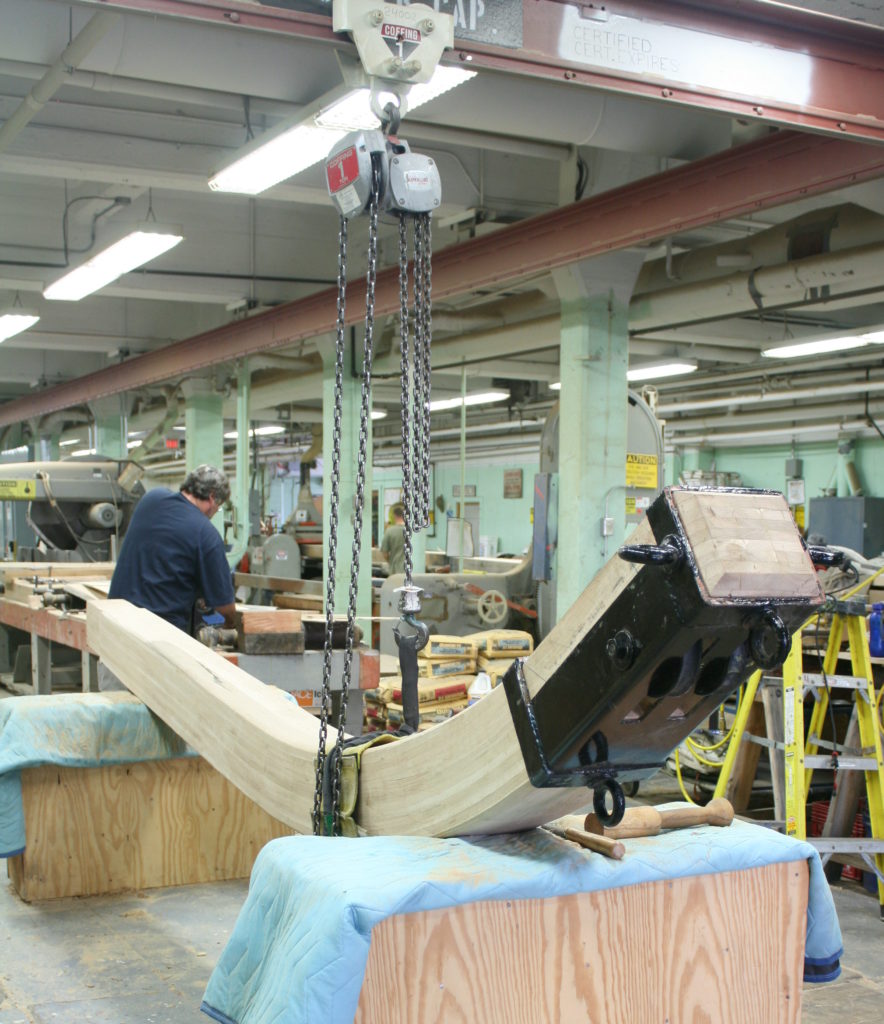
Fore Topgallant/royal Mast
USS Constitution‘s masts are assembled in three sections: The lower fore and main masts sit in steps on the upper keelson and the lower mizzen mast steps at the orlop deck; the topmasts, the masts’ middle sections, are held in place by iron”fids” which support the masts’ weight on trestle trees; and the long, slender topgallant/royal masts that soar overhead are also held in place with iron fids. The 58′ fore topgallant/royal mast was refurbished and repainted by Steve Ridlon, Naval History & Heritage Command Detachment Boston crane operator and rigger. Other upper masts and yards are in the process of being worked on so that by the spring of 2018, “Old Ironsides” will once again be fully rigged with all of her spars.
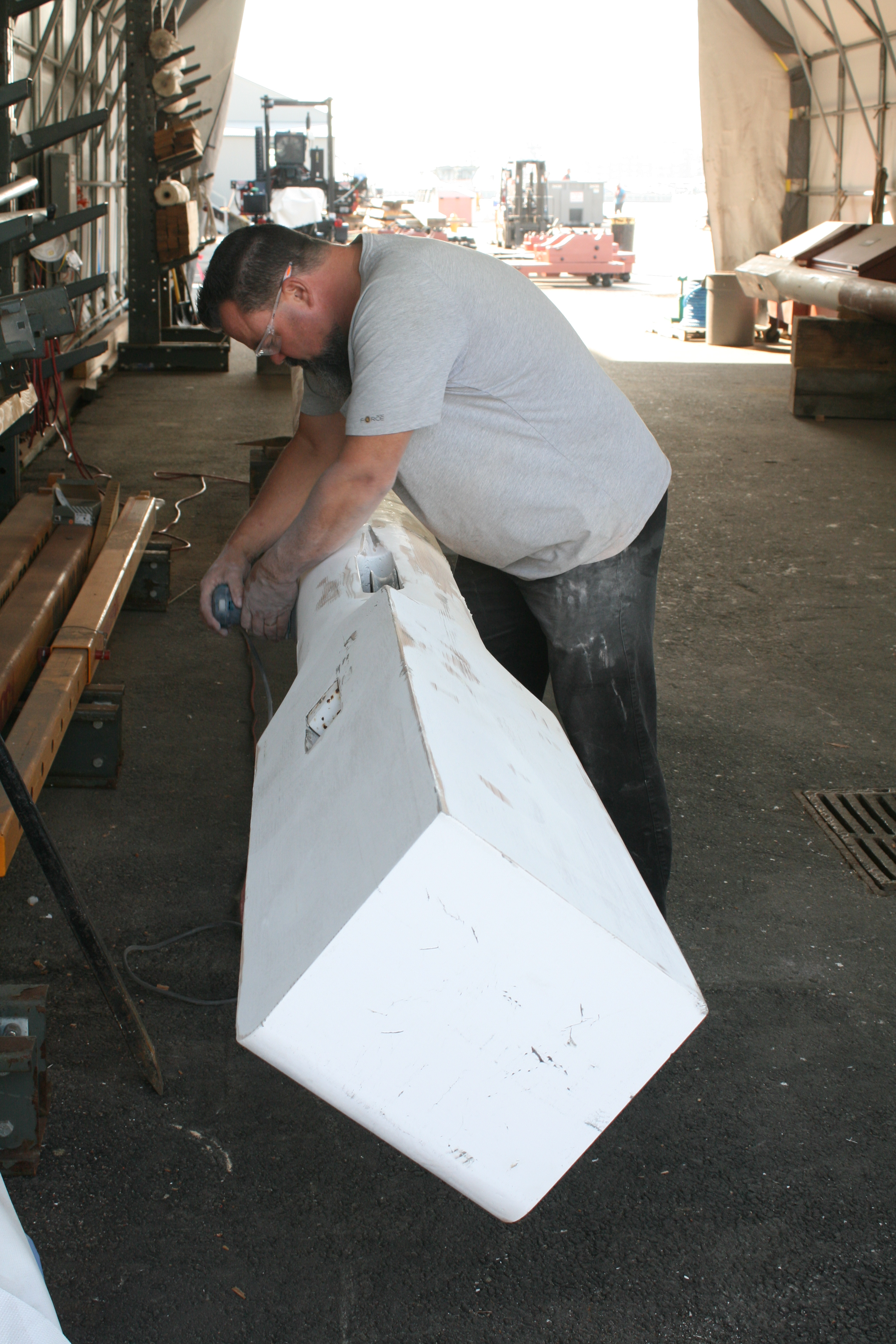
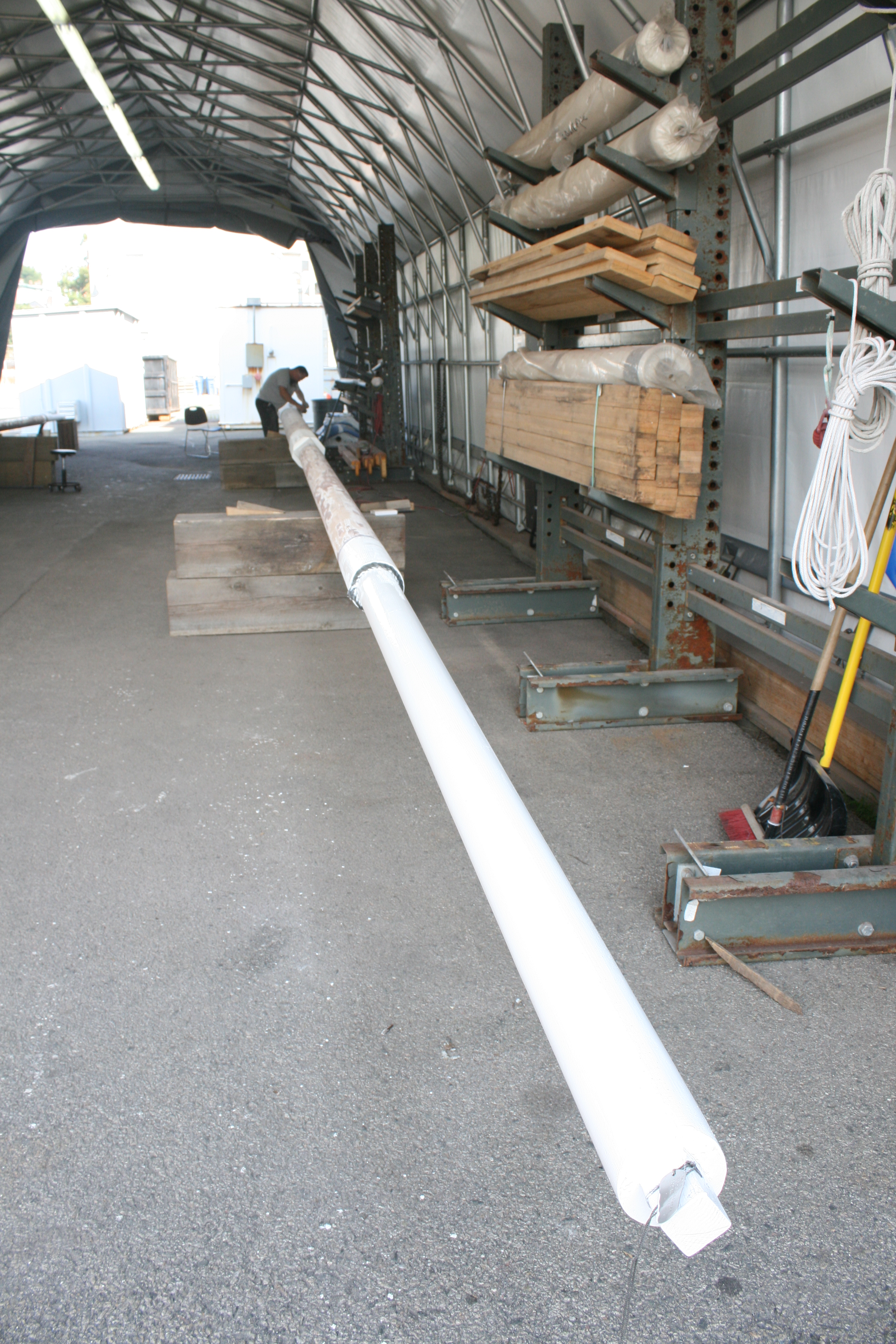
Celebratory Events
To wrap up the 2017 season, the 220th anniversary of USS Constitution‘s launch was commemorated on October 20, 2017. With tugs assisting, “Old Ironsides” took her first underway cruise in three years. Thousands of spectators gathered all along the waterfront as the Ship headed out to Castle Island at the bottom of Boston’s Inner Harbor and back.

November 3, 2017, was USS Constitution‘s change-of-command. CDR Robert S. Gerosa, Jr., who oversaw “Old Ironsides'” first 21st-century dry docking, departed for a new duty station, and CDR Nathaniel R. Shick was installed as the 75th in command. Fair winds and following seas to CDR Gerosa and a hearty welcome aboard to CDR Shick!
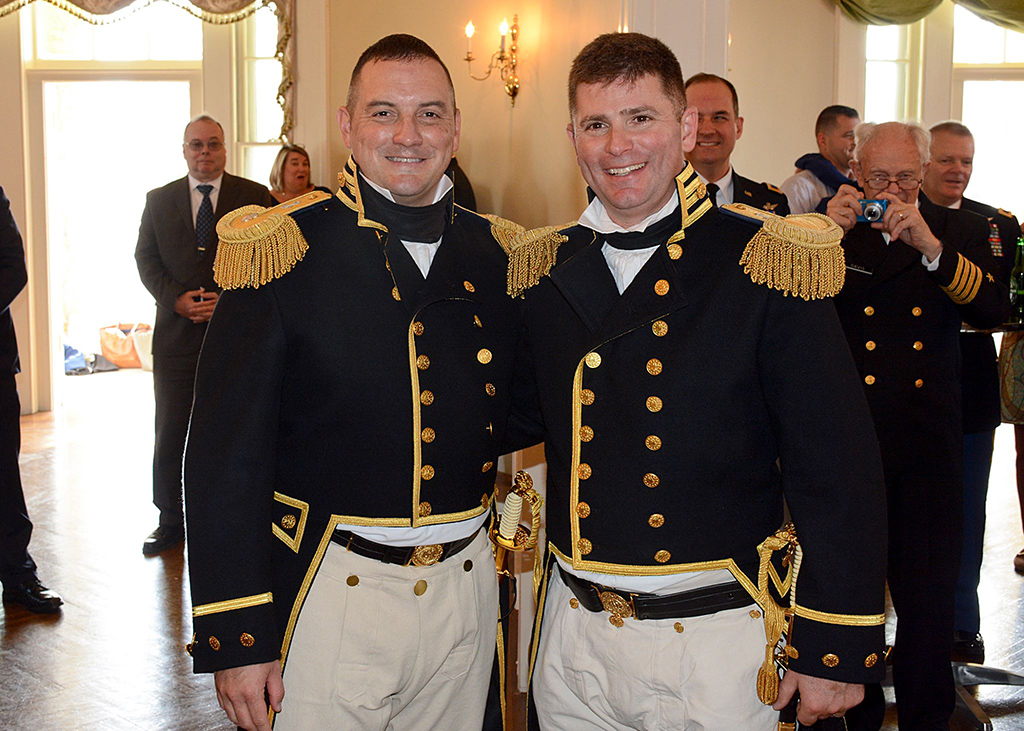
Work on USS Constitution will take place throughout the coming winter and spring months. Stay tuned as we continue to report on the final months of the 2015 restoration and look forward to “Old Ironsides'” 221st year of service as America’s Ship of State.
_____
The activity that is the subject of this blog article has been financed in part with Federal funds from the National Maritime Heritage Grant program, administered by the National Park Service, U.S. Department of the Interior, through the Massachusetts Historical Commission, Secretary of the Commonwealth William Francis Galvin, Chairman. However, the contents and opinions do not necessarily reflect the views or policies of the Department of the Interior, or the Massachusetts Historical Commission, nor does the mention of trade names or commercial products constitute endorsement or recommendation by the Department of the Interior, or the Massachusetts Historical Commission.
The Author(s)
Margherita Desy, Historian, Naval History and Heritage Command Detachment Boston
Historian, Naval History and Heritage Command
Margherita M. Desy is the Historian for USS Constitution at Naval History and Heritage Command Detachment Boston.
